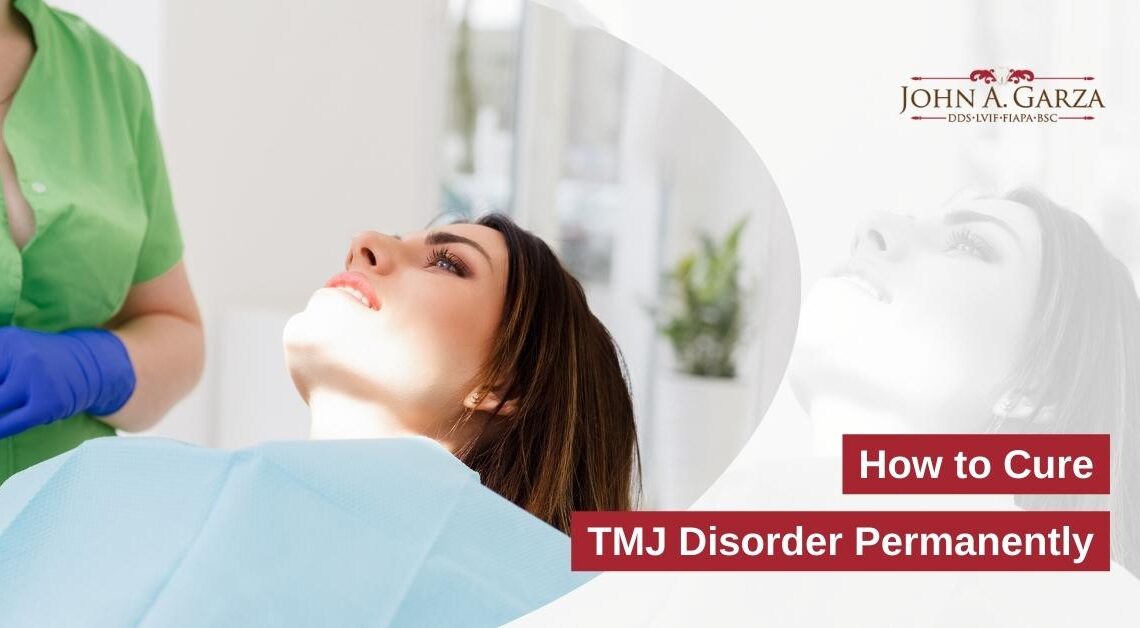How to Cure TMJ Disorder Permanently
The temporomandibular joint is crucial for facial muscle action, such as smiling or chewing. This joint links the skull to the lower jaw. We often refer to the lower jaw as the temporal bone, placed immediately in front of the ear.
In this article, we’ll discuss how to cure TMJ disorder permanently.
A TMJ problem arises when that joint isn’t performing correctly. The most telling indicator that you have this is if you feel pain and suffering originating from the bone directly below your temple. Jaw clenching and teeth grinding, trauma or damage to the jaw, wear and tear, and aging can all contribute to this problem. It, too, is susceptible to arthritis, much like other joints in the body.
Treating TMJ Pain
Home treatment
Several at-home treatments can assist in alleviating the symptoms of a TMJ condition. You should record your symptoms as you carry out these therapies. Talk to your doctor right once if your TMJ symptoms worsen or notice new symptoms.
There are several possible causes of TMJ, but stress and lifestyle factors are the most frequent. As a result, one of the most effective first-line treatments is a lifestyle change. But you don't have to go through it alone; regular visits to a dentist who can treat TMJ symptoms are beneficial in the early detection and treatment of TMJ disorders.
Splints
Splints created to fit over your teeth are known as custom splints. It is possible to avoid clenching or grinding your teeth by wearing these splints. Taking a break like this permits the temporomandibular joint to recover without any trouble.
If the discomfort subsides, don't immediately remove the splints. It's best to keep using it for two to three days to heal the joint. Take it easy for a few days before you resume your normal routine and avoid putting stress on the newly repaired joint.
Medication
Short-term usage of nonsteroidal anti-inflammatory drugs (NSAIDs), such as ibuprofen, may temporarily relieve the jaw and muscular pain for many people.
Pain and other symptoms may be treated with stronger medications, such as anti-inflammatory drugs, muscle relaxants, or antidepressants, if necessary. If you're suffering from chronic pain, there are several drugs approved by the FDA for various disorders (e.g., depression, seizures) that can alleviate your discomfort. It's worth noting that the FDA has not yet approved any medications to treat temporomandibular problems.
Physical Therapy
Joint-specific exercises are part of physical therapy. Exercises like chin tucks and tongue ups are just a few of the many that can be incredibly beneficial.
It is also possible to treat TMJ issues using acupuncture and other forms of massage. Consult a physiotherapist before attempting any of the exercises listed here. Make no mistake: executing things incorrectly will only exacerbate the situation, which is why you should seek out assistance from an expert.
Surgery
According to the National Institutes of Health's TMJ pamphlet, the most conservative, reversible therapies are strongly recommended. Conservative treatments do not include invading the face, jaw, or joint tissues or requiring surgery. Reversible therapies do not permanently alter the jaw or teeth' structure or position. If TMJ problems become persistent and severe, intensive treatment is not always necessary to alleviate symptoms.
Arthrocentesis
This is a minor surgery typically performed in the office under a local anesthetic. It is frequently advised when the jaw becomes locked in the closed position unexpectedly. Additionally, it can aid in the reduction of inflammation in the TMJ. Needles are placed into the afflicted joint, and the joint is cleaned out with sterile solutions. At times, a surgical instrument is required to remove scar tissue or release a misaligned disc.
TMJ arthroscopy
Various forms of TMJ issues can sometimes be treated with arthroscopic surgery just as effectively as open joint surgery. A short, thin tube (cannula) is introduced into the joint space, followed by an arthroscope and small surgical instruments. Although TMJ arthroscopy carries lesser risks and problems then open joint surgery, it does have significant limits.
Open-joint surgery
General anesthesia is required for open-joint surgery. This type of surgery requires a lengthy incision to insert instruments, unlike arthroscopy. The jaw joint may need open-joint surgery if the bone structures that make up the joint are deteriorating or tumors in or around the TMJ.
Surgery is a drastic measure that should only be used as a last resort. Repairs, repositioning, and, in rare circumstances, removal and replacement of TMJ components are possible. Jaw procedures are performed under general anesthesia and need a lengthier recuperation period.
Learn more about how to cure TMJ permanently by contacting Garza DDS
If you suffer from TMJ or Temporomandibular Joint Dysfunction, you've probably been looking for an answer to how tmj is fixed. Your search ends here! Dr. Garza diagnoses and explains treatments interactively using touch screen displays that display your chart, photographs, and digital x-rays directly in front of you, allowing you to feel as involved and comfortable as possible while answering all of your concerns about your care..


